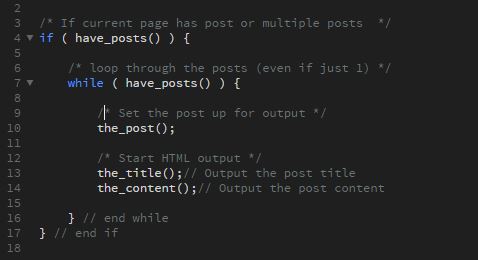Spaghetti code is as old as the first programming language. It refers to the style or for better terms lack of structured programming rules. It is a unnecessarily convoluted and tangled mess of code that is unclear even to the author of the code.
The cause of spaghetti code is due to inexperience, bad guidance, lack of QA, and worse… bad attitude from the programmer.
This style of programming is near impossible to maintain and update. Just compare the 2 images below. (The images are simplified but gets the point across. Spaghetti code is far worse than the 2 images compared.)


Not only is it disrespectful for the person buying the end product but if you’re working in a team, it is disrespectful to them as well. It creates sub-par products and services. No one should try and figure out what is happening within a code fragment or the entirety of it.
Now imagine the above on a website with thousands of lines of code. All an unmanageable mess. Not only will you soon find out that your website cannot grow, but making updates becomes tedious and expensive.
To make matters worse, imaging actually making an update just to find out it broke another function or series of dependencies somewhere in another file leading to a broken front-end such as an image, text, SEO data, responsiveness, and contact forms just to name a few.
We often see this with outsource groups that are overseas (outside of the US). They will often charge a low upfront fee, bill you double or triple the hours and then proceed to deliver a rushed job that ends up being your worst investment.
How does this hurt your process?
Simple. Clients ask for a lot. Every-time you need to make an update, your spaghetti-coder (or worse, the person trying to make it better) will have to take double or triple the time it requires to fulfill that task. You will either need to eat up the cost or push it onto your client. Either way, it results in a bad experience.
This type of coding also contributes to bottle-necking workflows. While you could have been pushing out more projects, you end up with a backlog that you cannot seem to get out of. Expectations are not met and satisfaction of services suffer.
This also contributes to inconsistency. Often times on the front-end of your website elements just don’t function how you would expected to. Leading to horrible user experience and horrible interface design.
What about scalability?
Scaling is by-product of good processes. If you have good workflows in place, you will be able to scale up and manage sites effectively. Yes we know not everything is perfect, but if all your gears are in tune, scaling is that much easier.
Now imagine trying to grow but all you have is a backlog, created by unnecessary bottlenecks. Then at this point all you’re doing is contributing to the inefficiency by forcing growth.
At this point you are most likely understanding the point of bad code. This is just the tip of the iceberg. If you think spaghetti code is bad, wait until you read about lasagna code. Nope that was not a joke. It is real.
Let us know your thought in the comments.





